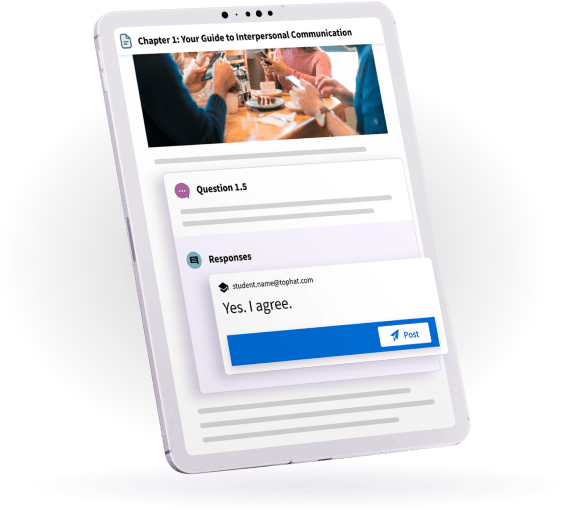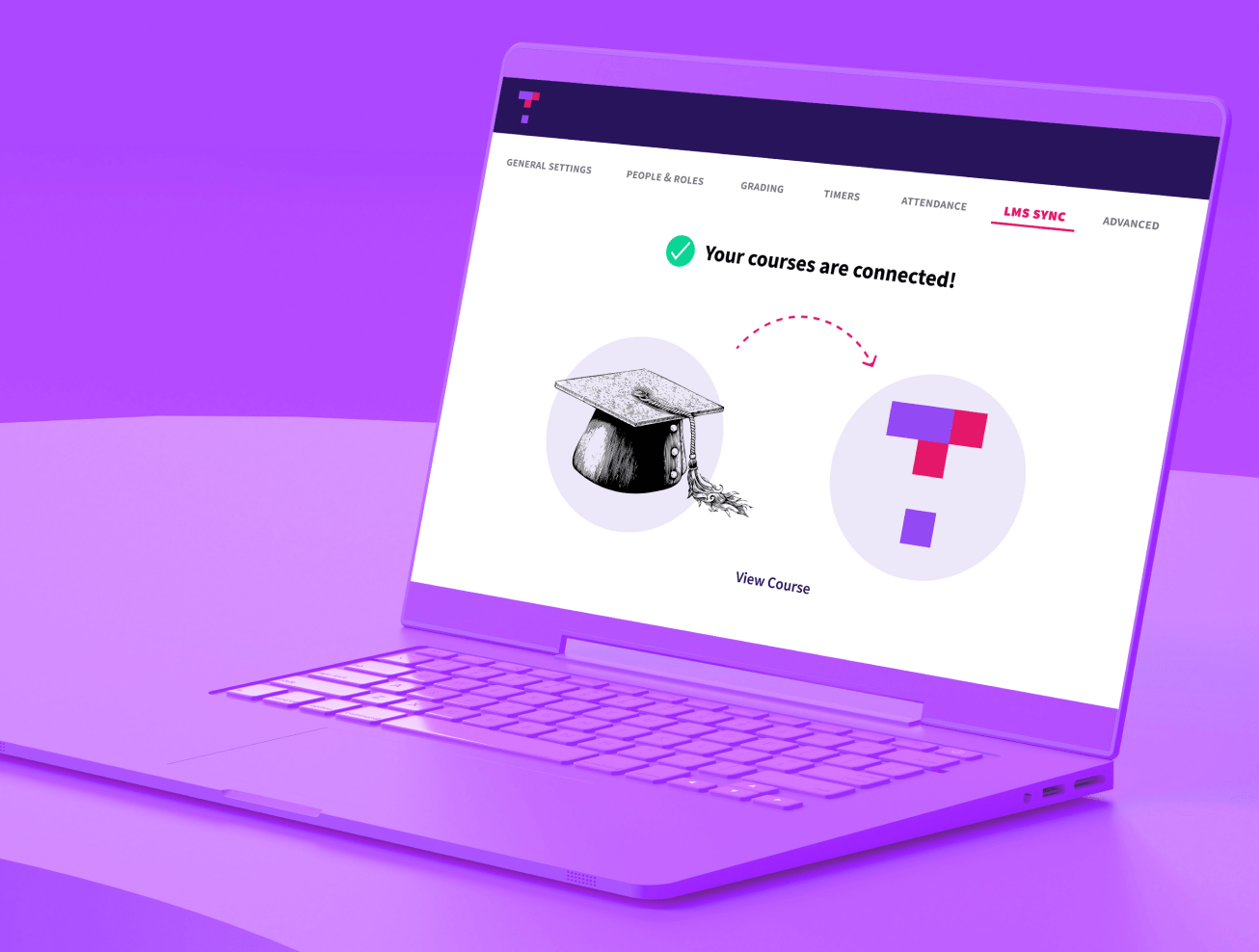iClicker
Top Hat
Engagement
iClicker offers asynchronous polls and quizzes for students to respond to outside of class.
Unlike classroom clickers, Top Hat lets educators engage their students wherever learning takes place. Add questions, polls, and discussions to readings, review materials, and other content that students can interact with in class or on their own time.
Learning
iClicker offers polling with only five question types.
With over 14 question types, Top Hat encourages students to think of what they’ve learned and apply it in different ways. Educators can also use
Ace, Top Hat’s AI-powered assistant, to instantly generate questions from their content. Clickers for classrooms can only go so far.
Controlled
Quizing
iClicker’s low-stakes quizzing allows instructors to ask questions to students outside the platform. This makes it difficult for students to look at quiz results when they study.
With Top Hat, the questions you create are stored on our platform. They can be used to assess students in formative, low-stakes, and high-stakes settings, while you stay in control of custom due dates for your class and individual students.
Direct
Support
Some iClicker users have found it difficult to set up and use.
Top Hat’s best-in-class support staff guide faculty every step of the way, from creating your course to building mid-semester check-ins and assessments. One-to-one onboarding, instructional design expertise and 24/7 technical assistance ensure you’re ready to deliver transformative learning experiences.










